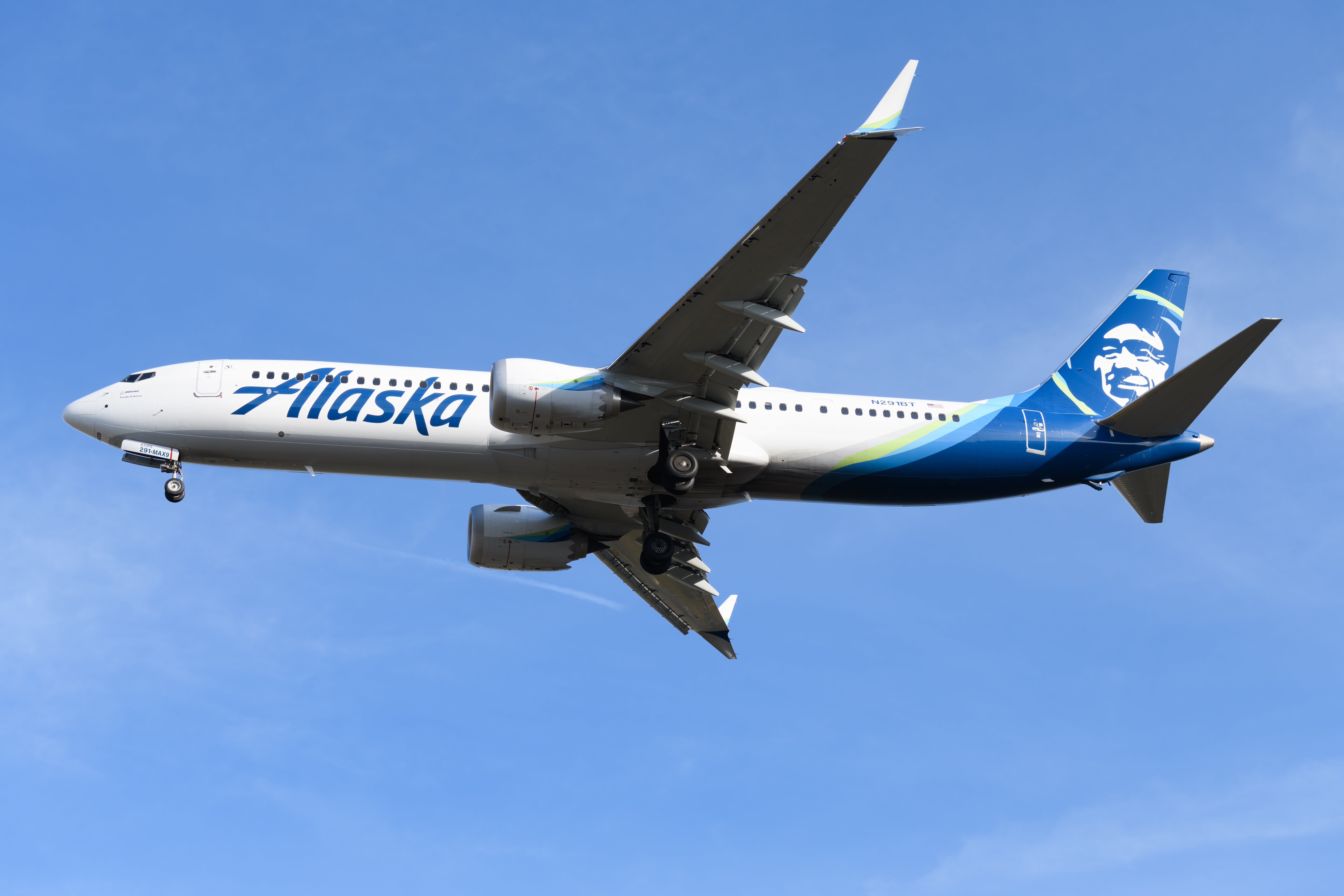Only minor injuries were sustained when a section of an Alaska Airlines Boeing 737 Max 9 blew out during flight Friday as the aircraft was enroute from Portland International Airport (KPDX) to Ontario, California (KONT). The aircraft depressurized and the flight crew returned to KPDX. In response, Alaska Airlines has grounded its 737 Max 9 fleet, consisting of 65 jets, while the investigation begins.
A photograph sent to Portland television station KPTV by a passenger shows a gap in the fuselage, where a window would normally be, and the oxygen masks deployed. A photograph taken from the exterior of the aircraft when it was on the ground shows it was a rear door that was blown out. According to industry officials, it is a panel called a “plug door,” and it can be used as a door or as a window for an extra row of seats.
Minor injuries were reported and one passenger stateted that the force of depressurization pulled a child’s shirt off their body.
According to FlightAware.com, the flight took off from Portland at 4:52 p.m. PST, reaching an altitude of approximately 16,000 feet, then descended and returned to the airport by 5:27 p.m.
According to a statement sent to FLYING from Alaska Airlines, “Alaska Airlines Flight 1282 from Portland, Oregon, to Ontario, California, experienced an incident this evening soon after departure. The aircraft landed safely back at Portland International Airport with 174 guests and six crewmembers. We are investigating what happened and will share more information as it becomes available.”
The Boeing Company reports having a technical team standing ready to support the investigation, stating, “We are aware of the incident involving Alaska Airlines Flight 1282. We are working to gather more information and are in contact with our airline customer.” Several matters have recently plagued the aircraft’s delivery schedule, including parts quality issues and a recent call for further inspection of certain rudder control system bolts.
The FAA notes that the agency and the National Transportation and Safety Board are investigating the incident.
This story will be updated as more information becomes available.
